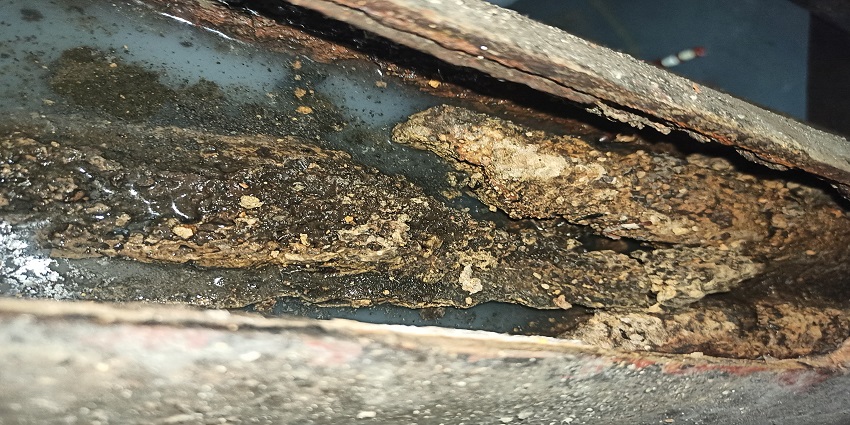Maintaining a clean and odor-free washroom is essential for any facility, whether it’s a public restroom, an office space, or a home. However, one often overlooked culprit that can compromise washroom hygiene is uric acid. While it might seem like a minor issue, the buildup of uric acid can lead to significant challenges, affecting cleanliness, plumbing, and even health. In this blog, we’ll explore the hidden challenges of uric acid in washrooms and offer tips on how to tackle them effectively.
- The Odor Dilemma: When Uric Acid Strikes
One of the most noticeable issues caused by uric acid is the persistent, unpleasant odor that can linger in washrooms. Uric acid is a byproduct of urine, and when it accumulates on surfaces like toilet bowls, urinals, and floors, it can break down into ammonia. Ammonia has a strong, pungent smell that can be difficult to eliminate with standard cleaning products. The odor can be particularly troublesome in high-traffic washrooms, where regular maintenance may not be enough to keep it at bay.
Solution: To combat odor, it’s crucial to use enzymatic cleaners specifically designed to break down uric acid. These cleaners target the acid at a molecular level, effectively neutralizing the smell and preventing it from returning.
- Stubborn Stains: The Mark of Uric Acid
Uric acid doesn’t just smell bad—it also leaves behind unsightly stains. These stains are typically yellowish or brown and can appear on a variety of surfaces, including porcelain, tiles, and grout. Over time, the acid can seep into these materials, making the stains more difficult to remove.
Solution: Regular cleaning with uric acid-specific products is key to preventing stains. For already affected areas, a deep clean with a strong acid-based cleaner may be necessary to restore the surface to its original condition.
- Scale and Crystallization: A Plumbing Nightmare
Another challenge posed by uric acid is its tendency to crystallize and form scale on plumbing fixtures and inside pipes. This buildup can restrict water flow, leading to blockages and potential plumbing issues. In severe cases, the scale can be so extensive that it requires professional intervention to remove.
Solution: Regular descaling of plumbing fixtures and pipes can help prevent the buildup of uric acid crystals. Using urinals with built-in flushing systems or installing waterless urinals with appropriate cleaning solutions can also reduce the risk of crystallization.
- A Breeding Ground for Bacteria
Uric acid doesn’t just cause physical damage—it can also create a hospitable environment for bacteria. The presence of uric acid crystals can promote bacterial growth, which not only exacerbates odor issues but also poses a significant hygiene risk. Bacteria can thrive in the cracks and crevices where uric acid accumulates, making it harder to maintain a truly clean washroom.
Solution: Incorporate antibacterial cleaning agents into your routine, particularly in areas where uric acid buildup is likely. Regular disinfection of washroom surfaces can help keep bacterial growth under control.
- Increased Cleaning Effort: More Than Just a Routine
Because uric acid is so persistent, maintaining a clean washroom requires more than just a standard cleaning routine. Facilities may need to invest in specialized cleaning products and devote extra time to scrubbing and maintaining washroom surfaces to prevent uric acid buildup.
Solution: Implement a targeted cleaning schedule that focuses on high-risk areas like urinals and the surrounding floor. Train cleaning staff to use the appropriate products and techniques for dealing with uric acid.
- Surface Damage: The Long-Term Impact
Over time, the acidic nature of uric acid can cause damage to various surfaces in the washroom. This is particularly true for materials like grout, tile, and certain metals, which can corrode or degrade with prolonged exposure to uric acid. This not only affects the appearance of the washroom but can also lead to costly repairs.
Solution: Regular inspection and maintenance of washroom surfaces can help catch and address damage early. Consider sealing grout and other porous materials to prevent uric acid from penetrating and causing long-term harm.
- Health Concerns: Beyond the Surface
While the smell and stains caused by uric acid are immediate concerns, there are also potential health risks associated with prolonged exposure. The combination of uric acid and bacteria can create an environment that may trigger respiratory issues, particularly for individuals with sensitivities or allergies. In public restrooms, this can be a significant concern for maintaining a safe and healthy environment.
Solution: Ensure that washrooms are well-ventilated and cleaned regularly to minimize health risks. Using air purifiers and maintaining proper humidity levels can also help mitigate the effects of uric acid on indoor air quality.
- Clogged Drains: An Unseen Consequence
Finally, uric acid buildup can contribute to clogged drains, a problem that often goes unnoticed until it becomes severe. Uric acid crystals can accumulate in pipes, gradually leading to blockages that require professional plumbing services to resolve.
Solution: Preventative maintenance is key. Regularly flushing drains with descaling agents and ensuring that urinals are properly cleaned can help avoid clogs caused by uric acid.
Conclusion
Uric acid may seem like a minor nuisance, but its impact on washroom cleanliness, hygiene, and maintenance is anything but trivial. By understanding the challenges it presents and taking proactive steps to address them, you can ensure that your washroom remains a pleasant and sanitary space for everyone. Whether it’s combating odors, preventing stains, or avoiding plumbing issues, a targeted approach to uric acid management is essential for any facility.
Remember: Regular cleaning, the right products, and preventative measures are your best defenses against the hidden challenges of uric acid in washrooms.






